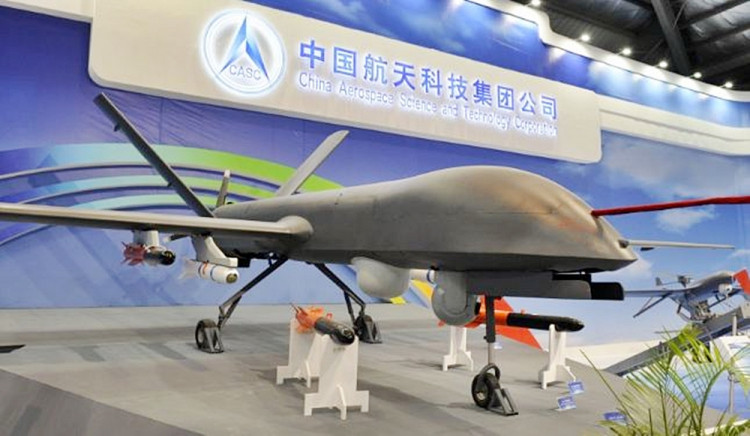Military and civilian aerial drones or unmanned aerial vehicles (UAVs) that are made in China are enjoying unprecedented popularity overseas and threatening the United States' position as the top dog in this highly lucrative market.
Cost-effectiveness, or the fact Chinese UAVs are far cheaper than the Americans', is the main reason why Chinese aerial drone makers such as DJI Innovations and the China Academy of Aerospace Aerodynamics of the China Aerospace Science & Technology Corporation (CASC) consortium, are doing well worldwide. Then there's the fact Chinese aerial drones do the jobs they're meant to do, effectively and cheaply.
DJI Innovations, China's leading civil drone developer, said 80% of its revenues come from overseas markets. DJI drones are now sold to more than 100 countries and regions in the world, with the US being the biggest customer followed by the EU, said Xie Tiandi, head of public relations at DJI.
Xie said DJI drones are being heavily used in movie and TV production and other forms of entertainment in overseas markets. DJI's industrial drones are also gaining popularity abroad and Xie noted that many Japanese farmers are buying more and more DJI drones for spraying crops.
"Chinese commercial drones are much cheaper than locally made drones in those countries, but they offer very good quality, mainly due to low manufacturing costs in China," said Ke Yubao, executive secretary general of the Aircraft Owners and Pilots Association of China.
As for military drones, the main Chinese military aerial drone player is CASC, which has successfully marketed its armed aerial drones to Iraq, Saudi Arabia and other countries in the Middle East. Its most popular model is the CH-4 (Cai Hong-4), a medium-altitude, long-endurance (MALE) unmanned aerial vehicle system designed and built by China Academy of Aerospace Aerodynamics (also known as the 11th Academy) of the CASC consortium.
CH-4 the largest member of the Cai Hong (Rainbow) class and looks similar to the U.S. General Atomics MQ-9 Predator UAV. It has a range of 3,500 km and can linger over a target area for 40 hours. The Cai Hong-class has been sold to Egypt, the United Arab Emirates, Pakistan, and Nigeria.
The reason for the CH-4s popularity in the Middle East and Africa is its price: a CH-4 costs only $1 million compared to $30 million for the MQ-9 Predator at 2016 prices. Another reason is that CASC asks no questions such as what the drones will be used for. On the other hand, the Americans limit Predator sales to countries with good human rights records.
CH-4 drones flown by Iraq are armed with precision AR-1 missiles and FT-5 precision-guided bombs both made by China. Iraq is the leading user of the CH-4 in the Middle East.






